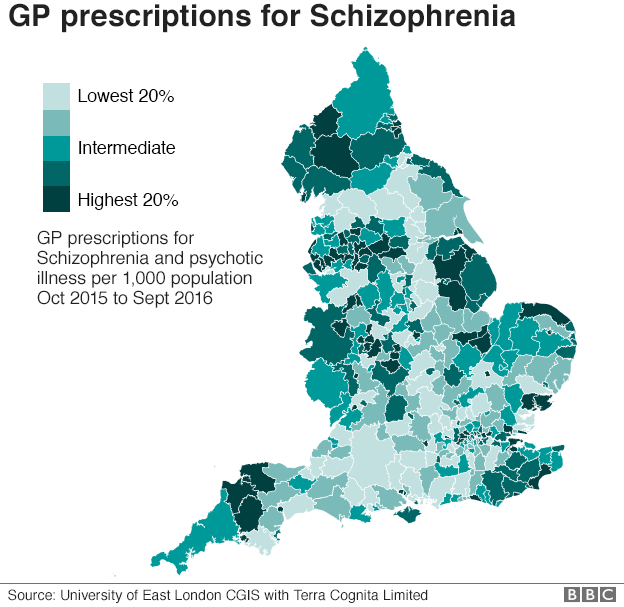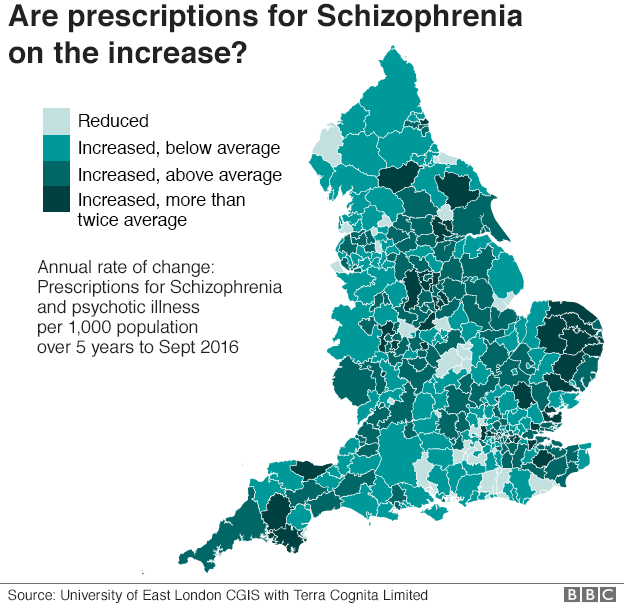Maps reveal schizophrenia 'hotspots' in England
- Published

Maps have revealed "hotspots" of schizophrenia and other psychotic illnesses in England, based on the amount of medication prescribed by GPs.
The analysis by the University of East London showed North Kesteven, in Lincolnshire, had the highest rates.
The lowest rate of schizophrenia prescriptions was in East Dorset.
However, explaining the pattern across England is complicated and the research team says the maps pose a lot of questions.
They were developed using anonymous prescription records that are collected from doctors' surgeries in England.
They record only prescriptions given out by GPs - not the number of patients treated - so hospital treatment is missed in the analysis.
Data between October 2015 and September 2016 showed the average number of schizophrenia prescriptions across England was 19 for every 1,000 people.
The top five were:
North Kesteven, 39 per 1,000 people
Coventry, 35 per 1,000 people
Rochdale, 34 per 1,000 people
Cambridge, 34 per 1,000 people
Hastings, 33 per 1,000 people
Other high-prescribing pockets were in Manchester, Liverpool, Wigan, Kingston-upon-Hull and Walsall.
The lowest prescribing was found in:
East Dorset, nine per 1,000 people
South Gloucestershire, 10 per 1,000 people
Tewkesbury, 10 per 1,000 people
York, 10 per 1,000 people
Epsom and Ewell, 11 per 1,000 people
Prof Allan Brimicombe, one of the researchers from UEL, said: "The pattern is not uniformly spread across the country."
He suggests this could be due to "environmental effects" such as different rates of drink or drug abuse.
Prof Brimicombe told the BBC: "The top one is in the Lincolnshire countryside and there are others in the countryside."
But there is also a vein of high prescriptions in the North West.
Prof Brimicombe said: "This raises questions that we can't yet answer, but it helps us raise the question.
"In each of these areas of high prescriptions there may be a different set of drivers that are leading to this situation.
"Looking into them starts to inform policy into ameliorating it."
Different attitudes of GPs prescribing medication in different parts of the country could also be relevant.
The data explored how prescribing habits changed between 2011 and 2016.

Over the five years, the rate of prescribing increased by 3% per year. East Anglia had some of the highest increases.
Prof Brimicombe said: "The pattern is very striking.
"These changes do not have a strong association with lifestyle types, so it's more likely to be due to differences in policies and practices in the way mental health services are commissioned across the country."
Follow James on Twitter, external.